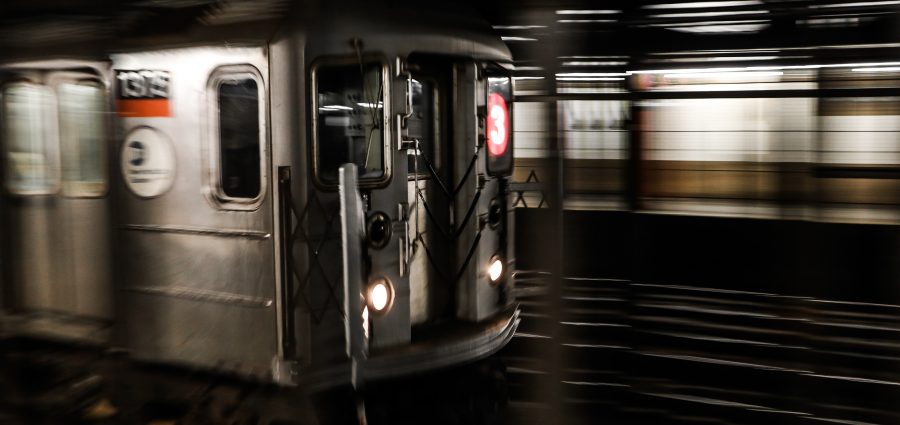The Metropolitan Transportation Authority (MTA) today announced on-time performance and a host of other performance measures improved to historic levels in 2020 at MTA New York City Transit, Long Island Rail Road and Metro-North Railroad, sustaining historic improvements already achieved just before the CoViD-19 pandemic.
The outstanding customer-focused metrics reflect great strides the agencies have made in hardening infrastructure and improving reliability and safety despite the challenges of a global pandemic.
New York City Transit
Subways
MTA New York City Transit 2020 full-year statistics show continued performance improvements after months of historic gains before the onset of the CoViD-19 pandemic. Average weekday on-time performance (OTP) in 2020 was 88.6%, the highest in recent history. Contributing to improved performance were infrastructure investments including the replacement of over 900 mechanical signal timers with digital units to improve reliability. Crews also completed work on about 22,000 feet of track and 32 switches, including key switches at 14tb Street – Union Square on the  lines.
lines.
Average weekday major incidents was 24.3 per month for 2020, which is the lowest since the metric was first tracked in 2015. Customer Journey Time Performance (CJTP) also improved compared to the prior year, reaching 85.8% in 2020. CJTP is the strongest measure of customer experience as it includes both waiting and travel time compared to schedule.
“Prioritizing safety and the improvement of subway and bus performance was a goal of mine from Day One on the job,” said MTA NYC Transit Interim President Sarah Feinberg. “I look forward to maintaining this momentum as we continue to see riders return to the system and provide them with the reliable service all New Yorkers deserve.”
Buses
Additional Travel Time (ATT), the estimated average extra time customers are onboard compared to scheduled onboard time, decreased by 46 seconds on a 12-month average basis. Customer Journey Time Performance (CJTP), which estimates the percentage of customers who complete their journey within five minutes of scheduled time, increased by 5.1 percentage points to 77.4% over the last year.
Contributing to improved performance is NYCDOT’s addition of 16.4 new miles for bus lanes and busways that were installed in 2020. They are:
- Brooklyn – Jay Street busway, 0.8 miles;
- Bronx – 149th Street Bus Lane, 3 miles; El Grant Highway Bus Lane, 1.2 miles;
- Manhattan – 14 Street Bus Lane, 0.8 miles;
- Queens – Merrick Boulevard Bus Lane, 5.9 miles;
- Staten Island – Hylan Boulevard Bus Lane, 4.7 miles.
This unprecedented achievement was followed by the installation of a busway on Main Street in Flushing Queens on January 19, 2021. The MTA continues to call for 60 miles of bus lanes and busways citywide.
Additionally, 2020 also saw a major expansion of intersections with Transit Signal Priority (TSP). In partnership with NYC DOT, the MTA added 648 intersections with TSP in 2020, allowing buses approaching the intersections to get an extended green light or a shortened red light. The expansion was by far the largest addition of TSP in any year since the first activation in 2012. New activations occurred in all five boroughs and include more than 120 intersections along the B82 SBS route in southern Brooklyn.
“We are greatly encouraged by the new miles of bus lanes and busways and the expansion of TSP,” said MTA Bus Company President Craig Cipriano. “We know that well-enforced bus priority improves bus speeds and bus service, and draws customers back to the system.”
“It is encouraging to hear that the MTA has improved in many metrics across our transportation system,” said Council Member Ydanis Rodriguez, Chairman of the Transportation Committee. “I will continue advocating at the city level to ensure our public transportation system receives all of the support and the resources it needs. I look forward to working alongside my colleagues at the Council, the leadership at MTA, and advocates to ensure our trains and buses are affordable and accessible to all New Yorkers.”
Long Island Rail Road
Through the LIRR Forward Plan, system improvement and expansion projects plus state of good repair projects were performed in a swift and efficient manner, breaking installation records as a result. LIRR engineers planned work that took tracks out of service on a continuous basis for weeks at a time, enabling work to be performed during weekdays eliminating the need to start and stop work over various weekends. This method allowed for less major service disruptions and resulted in a 25% cost savings.
As a result of many of the initiatives under the LIRR Forward program to identify and address the root causes of train delays, 95.9% of Long Island Rail Road trains operated on-time in 2020, the best LIRR performance since modern record-keeping began in 1979 and up 3.5 percentage points from 2019.
LIRR replaced 22 switches in 2020 amounting to 23% fewer switch-related delays. LIRR crews installed 73,244 concrete ties, breaking a previous record of 42,000, set in 2001. A record 287,314 feet of continuous welded rail was installed leading to a 59% decrease in delays caused by broken rails. Just 25 track circuit failures occurred in 2020, down from the 48 in 2019.
“Over the last few years, we have systematically begun attacking our infrastructure needs with a new sense of urgency,” said LIRR President Phil Eng. “The success of this proactive approach under LIRR Forward is now providing our customers a more reliable and safer trip. This is the direct result of all our crafts rising to the challenge and working together to accomplish critical work in compressed timeframes while still delivering essential service. Know that we are committed to continuous improvement and will never rest on our laurels.”
“While much of our community slowed down during the pandemic, the essential workers at the Long Island Rail Road continued their tireless efforts to upgrade our infrastructure and fix the underlying problems that were responsible for countless cancellations, delays, and headaches for Long Island commuters,” said State Senator Anna M. Kaplan. “I am grateful for their hard work and for the leadership of LIRR President Phil Eng to keep Long Island moving forward even during these difficult times. I would also like to thank the MTA board for hearing my concerns and those of countless Long Islanders who spoke out against raising LIRR fares at this pivotal moment in our community’s battle against the CoViD-19 pandemic. As our economy begins to recover, it is important that mass transit remain efficient and affordable so that Long Islanders can get back to work.”
Metro-North Railroad
Through Metro-North’s Way Ahead Plan, the railroad expanded its SMARTRACK program in which the railroad strategically shuts down continuous segments of track to allow multiple work groups uninterrupted access to maintain and improve the system. Productivity increased accordingly. This pace of infrastructure work helped 97.9% of Metro-North trains to operate on time in 2020 even amidst the pandemic and with resulting declining ridership, the highest level since Metro-North was founded in 1983 and 3.5 percentage points above the prior year.
Metro-North crews installed more than 49,700 new cross ties, 1,641 bridge timbers and 36 new switches, cutting the number of delays caused by signal or switch failures by two thirds. Metro-North recorded just 566 of the 163,116 trains operated in 2020 as delayed all year due to switch or signal failures, down from 1,750 of the 230,787 trains that operated in 2019.
In addition, crews installed more than nine miles of continuously welded rail, surfaced 95 miles of track and replaced six grade crossing pads. Metro-North also improved equipment reliability, achieving a record Mean Distance Between Failure (MDBF) of 278,951 miles, a key measure of how long a railcar or locomotive travels before a breakdown, causing a delay.
“These record performance metrics are a direct result of the hard work of our entire Metro-North team, who come together to ensure that our customers receive the safe and reliable service that they deserve,” said Metro-North President Cathy Rinaldi. “As CoViD-19 vaccinations continue and the pandemic recedes, it is Metro-North’s unwavering commitment to the safety of our customers and the reliability of our service that will bring our customers back to the railroad.”
“Metro North’s achievements during the past year are significant and impressive,” said Assemblymember Amy Paulin. “As Chair of the Assembly’s Authorities and Corporations Committee, our committee needs to ensure that the MTA makes improvements both quickly and cost-effectively. With the progress made in 2020, the MTA has demonstrated that the public funds given to them were used wisely and efficiently. I will continue to support our New York transit system – one that is essential to New Yorkers and the great State of New York.”
.









